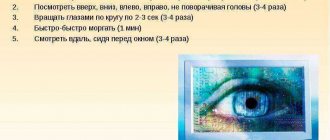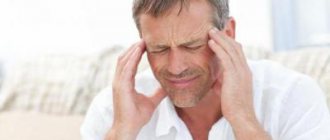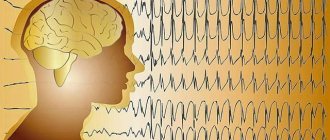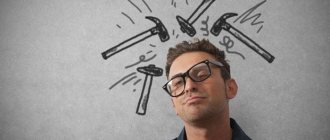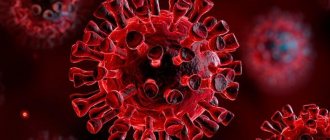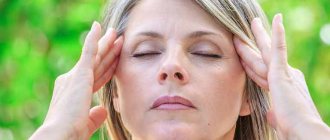There is no such person who would not be bothered at least once by a headache. This pathology has become a companion to all humanity, and it brings discomfort and unpleasant sensations. Doctors are sure that this is one of the pains that is contraindicated to endure. If there is pressure in your temples, you should immediately take medicine and then undergo an examination to find out the cause of the disease. You should not postpone your visit to the doctor if the following factors occur:
- the pain appears regularly
- does not stop for a day or more
- discomfort and pain increase
- not only puts pressure on the head, but also causes dizziness and nausea
After stopping the attack, you need to visit a specialist. Pressing pain in the temple is a sign of a serious illness that a doctor can diagnose based on the results of the examination. Qualified treatment can restore the normal functioning of the entire body and relieve the patient of headaches.
Causes
You should immediately consult a doctor if there is a lot of pressure on your temples, these are the causes of discomfort and the development of pain. There are many factors that provoke the development of pain in the temple area.
This disease affects people aged 30 to 50 years, with reduced immunity. The vital activity of such patients in this age category leads to a decrease in overall activity, as a result of which many diseases develop.
Doctors nowadays identify several main reasons for headaches and pressure in the temples:
- infectious and viral diseases
- poisoning with alcoholic drinks and drugs
- hormonal imbalance
- PMS
- insufficient rest and sleep
- high consumption of canned food and spicy foods
- nearsightedness and farsightedness can cause pressure in the temples and a feeling of slight dizziness
- dental problems
- development of otitis and sinusitis
- dysfunction in the nerve roots that are located in the neck, jaw and collar area can compress the head and cause pain
- migraine
- hypotension
- increased pressure inside the skull
Often the temple becomes painful due to the development of factors from the external environment. Due to pain, a person sometimes cannot eat food for 24 hours, which complicates the situation. Cause vasospasm and pain in the temporal region by moving up more than 3 kilometers. In this situation, intracranial pressure increases and the temples may be compressed. More than 10% of passengers complain of headaches while flying on an airliner. Sometimes the pain may continue for several hours.
In what cases does whiskey increase blood pressure?
If you drink whiskey constantly or in large quantities, the effect will be the opposite - your blood pressure will increase. This effect occurs after the second or third 50 ml serving of alcohol or when consumed for two or more days in a row. This is due to the effect of alcohol on the heart. If you drink too much alcohol, you will feel your heart rate increase. When the heart beats frequently, it more actively pushes new portions of blood into the vessels. The blood flow increases and new blood flows quickly. The vessels cannot cope with transportation and blood pressure rises.
The increase is one-time and chronic. If you drink a lot of whiskey at once, your blood pressure will temporarily increase by 5-20 mmHg. The indicators return to normal when the remaining ethanol leaves the body and the heartbeat returns to normal. But this will not happen if you drink whiskey on a regular basis. In people who often abuse this alcoholic drink, blood pressure increases chronically. According to research results, after every year of regular drinking, indicators chronically increase by 3-5 mmHg. After 2-3 years, such changes become dangerous for the body.
Symptoms
The doctor will be able to tell why there is pressure on the temple after a preliminary examination and examination of the patient. The nature of the pain can be throbbing, pressing and sharp in one or two temples. Painful sensations can last for several hours or days. The intensity of pain depends on the individual characteristics of the body. Common symptoms of pain development are:
- dull or throbbing pain in one or both temples
- pain can accompany the patient for several hours or even days
- Sometimes dizziness and nausea may occur
When you need to urgently go to the doctor
If the pain is not constant and goes away after taking an analgesic, then there is no particular reason for concern and an urgent trip to a specialist. Sometimes there is pressure in the temple area due to changes in atmospheric pressure and the approach of rain. It is recommended to contact a specialist in the following situations:
- pain has a specific location
- discomfort occurs in the morning or evening
- the painful sensation increases
- During the attack, the general condition worsens and other symptoms appear
- a headache in the temples may indicate the presence of another disease, so it is not recommended to be treated without a doctor’s prescription
Prevention of the disease
To prevent pain in your temples from tormenting you with enviable regularity, follow your daily routine: do not overstrain your eyes, get enough sleep, exercise and spend time in the fresh air. You need to sleep at least 8 hours a day. If you sleep less, you do not allow your brain to fully relax and rest.
Monitor the amount of coffee consumed per day: the amount in the diet should not exceed 1-2 cups per day. Also, eliminate or minimize the amount of alcohol consumed, which is harmful to the body.
Suffering from high blood pressure and a headache?
Why do headaches occur with hypertension?
As a preventative measure, you can take a break at least once a week without using a computer or other electronics.
Preventive measures can not only alleviate attacks, but even get rid of temporal cephalgia forever. First of all, you need to analyze your lifestyle and correct the missing points. Follow simple rules:
- choose a diet enriched with vitamins;
- exclude foods with tyramine, for example, chocolate, smoked meats, cheese, nuts;
- ventilate your living space daily;
- Don’t be nervous or panic, try to focus on the good;
- periodically undergo a course of physiotherapy, acupressure, acupuncture and other useful procedures;
- go in for sports, yoga, Pilates, swimming, gymnastics help a lot, the main thing is that the exercises are regular;
- plan your daily routine, you need to go to bed, wake up and eat at the same time;
- eight hours of complete rest is required;
- give up cigarettes, alcohol, medication abuse;
- See your doctor regularly.
Help prevent headaches:
- Elimination of harmful products.
- Complete rest.
- Ventilation of the room.
- Self-massage of the head.
- Compresses with essential oils.
- Herbal decoctions.
Graduated from the Ural State Medical University with a degree in General Medicine. General practitioner
Monitor the amount of coffee consumed per day: the amount in the diet should not exceed 1-2 cups per day. Also, eliminate or minimize the amount of alcohol consumed, which is harmful to the body.
Self-relieving pain attack
Only after diagnosis and examination, a specialist will be able to prescribe qualified treatment for headaches in the temple area. Before this, you can take a painkiller, having first read the instructions and studied all the contraindications. If you experience frequent pain, you should reconsider your diet. Many products contain chemical compounds that lead to the development of pain in the temples. This includes the following elements:
- tyramine, which is found in cheese, sausage, chocolate and tends to accumulate in the body
- monosodium glutamate, in addition to oriental cuisine, it is added to fast food and chips
- caffeine causes tension in the temples and increases blood pressure
Together with the use of drug treatment, traditional medicine is prescribed. If you often feel pressure on your temples, then traditional medicine recipes can help relieve the condition. They cannot remove the cause of the disease, but they will introduce auxiliary measures. Recipes:
- Essential oil of mint and lavender. Take a few drops of oil and rub lightly into the temple area. Or use an aroma lamp and breathe in essential oils.
- You can prepare a tincture with aloe and chicory juice.
- It is also recommended to place a cabbage leaf on the forehead area and wrap your head with a wool scarf.
Treatment of secondary headaches
Treatment of headaches that radiate to the eyes occurs with the help of medications; Some types of massage and even many folk remedies can be used. Treatment is focused on eliminating the cause of pain.
There are also measures that are aimed at emergency pain relief before seeing a doctor. Such measures can be applied at home and include the following:
- It is recommended to take a pose that will allow you to relax and relieve tension from the neck and back;
- go to a darkened room and close your eyes to calm your brain; in extreme cases, you can put on a blindfold;
- take a slow walk outdoors;
- apply a compress to the forehead and temple area;
- brew chamomile and drink it as tea; if you don’t have chamomile, you can make simple green tea;
- massage the temples, perform a head massage;
- take headache pills.
Next, you should make an appointment with your doctor for a consultation. Full treatment, of course, can be prescribed after a comprehensive examination.
The medicine Nurofen perfectly helps to cope with headaches of a migraine nature or caused by physical or mental overexertion and stress. Nurofen is relatively safe and does not produce such an adverse effect on the kidneys and liver as, for example, Analgin or Citramon.
If the pain, despite all efforts, does not go away for a long time, you should immediately go to the doctor. The symptom is likely caused by serious reasons and requires the attention of specialists. Headaches that radiate to the eyes, caused by excessive stress, are treated mainly with proper rest and sleep, good nutrition and exercise. It will also be useful to give up bad habits and switch to a healthy lifestyle.
Once the cause of pressure on the eyes and temples is discovered, it is important to eliminate it. To do this, anti-inflammatory therapy is carried out to help eliminate inflammation of nerve tissues and blood vessels. If discomfort is associated with hypertension, then it is important to normalize blood pressure levels. Neuroprotective treatment is necessary for stress and trauma. It is also important to reduce intraocular pressure and eliminate other diseases of the organ of vision.
And yet, when there is a headache in the forehead and pressure on the eyes, how to treat such conditions?
Treatment of headaches must begin with diagnosis of the disease that caused it.
If you eliminate the cause of the discomfort, the pain will go away. Therefore, treatment is prescribed only after the doctor determines what disease is bothering the patient.
Taking medications
Since arterial hypertension is a common cause of headaches, drug therapy is primarily aimed at normalizing blood pressure (Captopril, Renitec, Enam). Also, a neurologist can recommend drugs that strengthen blood vessels, restoring the flexibility and patency of the vascular bed (Verapamil, Cinnarizine, Amlodipine).
If you have a headache in your temples and pressure on your eyes due to migraine attacks, you can use painkillers. At the very beginning of the disease, preference is given to non-steroidal anti-inflammatory drugs: Aspirin, Ibuprofen, Paracetamol. In the future, if single-component drugs do not help, stronger drugs may be prescribed: Spazmalgon, Sumamigren, Triptan.
The selection of medications for cluster pain, temporal arteritis, and eye diseases depends on the individual characteristics of the patient and is performed only by a doctor.
Aromatherapy will help get rid of unpleasant sensations in the head caused by overwork. Oils of rosemary, mint, tea tree, lemon, and lavender have a healing effect. For migraines, just apply a couple of drops of essential oil to your wrists and temples.
A cool compress applied to the forehead relieves headaches well. For these purposes, you can use cabbage leaves or burdock leaves, grated potatoes wrapped in gauze. Even 15 minutes under a cool shower will help relieve discomfort in the head caused by rising blood pressure or a migraine attack.
To relieve pain, you can drink green, chamomile, or mint tea. Black tea with honey also helps relieve headaches. At home, you can strengthen the blood vessels of the head by taking viburnum juice or a vitamin mixture: walnut kernels ground in a meat grinder with lemon and honey.
Remember! All home treatments should complement traditional treatment.
If a headache presses on the eyes and temples, painkillers do not help, and simple procedures do not bring relief, you should urgently seek medical help.
Even the first attack of a painful headache will cause a person to ask: “What to do, how to rid yourself of repeated episodes?”
Pressing pain in the temples, caused by such reasons as changes in weather conditions, stress and all kinds of tension (physical and mental), visual fatigue, physiological condition, etc., do not require any special effort.
You can take a pill, relax on a comfortable sofa, and from now on set a course for observing the work, rest and nutrition regime, maintaining a healthy lifestyle, not forgetting about sufficient physical activity, and getting rid of bad habits. Perhaps these simple actions will become a cure.
Many sources say and write that air transport is not suitable for all people. However, people who have major or minor vascular pathology themselves should know about this.
If unpleasant sensations (strong pressure on the back of the head and temples, pain in the temples and pressure on the eyes, or pain accompanied by nausea and vomiting) are repeated with enviable consistency, and the pain becomes increasingly intense, the opinion of the aesculapian cannot be ignored. Perhaps the doctor, suspecting some kind of pathology, will find reason to send the patient for an in-depth examination, which will help in the future to carry out exactly the treatment that is needed, because the patient himself will be treated at random, hitting his finger in the sky.
As for primary headaches (migraines, for example, cluster pains...), only a doctor can help here too, prescribing medications on an individual basis.
Migraine comes in different types (simple, cervical, basilar, with and without aura, with different rates of attack development), so you first need to decide on the form of the disease, and then select medications. It can be:
- Non-steroidal anti-inflammatory drugs - NSAIDs (ketoprofen, diclofenac);
- Diergotamines (ergotamine, clavigrenin) and ergot preparations combined with caffeine (caffetamine, nomigren);
- Triptans (sumamigren, relpax), which are considered specific drugs;
- Opioid painkillers (codeine, butorphanol);
- Antiemetic drugs (cerucal, motilium).
Cluster pain does not in any way imply independence on the part of the patient in relation to treatment, and the patient himself, having endured one night, is unlikely to recklessly stay at home and, in fear, sort through a home medicine cabinet that has turned out to be useless.
The reader can find more detailed information about migraine and cluster pain in the relevant sections of the site sosudinfo.ru, where the causes, symptoms, and treatment are described in more detail.
In order to eliminate pain in the head (in the temporal, occipital region and in the eyes) caused by some pathology, you should first of all act on the cause, that is, on the disease that caused pressing pain in the temples and other parts.
Fighting age-related changes is not only difficult - it is useless, but it is possible to stop the progression of atherosclerosis.
If you have arterial hypertension, you will have to constantly take antihypertensive drugs prescribed by your doctor, and also, to the best of your ability, try to prevent the development of a hypertensive crisis. There are no universal recommendations for everyone regarding drug treatment in this case.
Pathological changes in hormonal levels, accompanied by increased blood pressure, pressure on the temples and other symptoms, also require the intervention of a specialist, and glaucoma in most cases is subject to only the skillful hands of an ophthalmic surgeon.
Diseases of the ENT organs that cause the described types of headaches are treated by an otolaryngologist, who usually prescribes:
- Vasoconstrictor drops (oxymetazoline, naphazoline), which, by the way, are undesirable to get carried away with, since they can cause atrophic changes in the mucosa;
- Rinsing the paranasal sinuses (saline solution);
- Antibacterial drugs;
- Antihistamines;
- Physiotherapeutic procedures.
However, if the process has gone so far that conservative treatment does not help, the patient will have to adjust to surgical intervention.
Viral infections (flu, ARVI) are usually treated by resting at home, drinking plenty of fluids, lowering the temperature as needed (above 38ºC), and using vitamins as treatment to maintain immunity.
Meningococcal (bacterial) infection is treated in a hospital and requires great effort from the entire medical staff of the infectious diseases hospital.
Trigeminal neuralgia requires the use of medications that the patient cannot buy in a pharmacy without a prescription (carbamazepine, trileptal, baclofen), and these medications are used according to a special scheme. In addition to medicinal effects on the nerve, physiotherapeutic procedures are prescribed (ultraphonophoresis, acupuncture), in other cases, if there is no longer hope for conservative therapy, they resort to surgical treatment, mainly minimally invasive.
True, a special problem is caused by brain tumors that cause the trigeminal nerve (and not only) to suffer. A tumor in the brain is removed using ionizing radiation (gamma knife), if it is in an accessible place and does not affect particularly important areas, otherwise it is removed by open access. However, there are other methods, but the treatment of tumor processes localized in the skull is a separate big topic.
Complications of headaches
Patients have the erroneous concept that one harmless pill that can relieve heaviness and pain in the head will eliminate the cause of the disease. There are several serious diseases, a symptom of which is pain in the temples:
- cerebral atherosclerosis
- cerebrovascular accident
- increased hypertension
- malignant neoplasms
At the first visit, the specialist will not be able to establish a diagnosis and the patient will need to undergo additional examination. If the cause is not eliminated in time and treatment is not started when the pain in the temples is of a compressed nature, then it can cost the patient his life. Especially older people should pay attention to frequent pain in the temporal region and immediately consult a doctor.
The main causes and symptoms of pain in the temples with pressure
There are many different factors for the appearance of pressing pain in the temples, for example:
- arterial hypertension. When blood pressure rises in the body, blood flow to the brain is disrupted. In this case, a person experiences the following symptoms: pain in the back of the head and temples, nausea, bouts of vomiting, numbness of the scalp;
- problem in the blood circulation in the brain. Pathological blood circulation in the brain occurs with aging of the body, genetic predisposition, head injuries, and various diseases. This condition causes its own symptoms: insomnia, weakness, dizziness, tinnitus;
- migraine and its symptoms. To date, it is not known for certain why migraines occur. But it differs from an ordinary headache: nausea, vomiting, pain felt for several days, photophobia, chills and general weakness. With a migraine, throbbing pain appears, but if you change the body position to a more comfortable one, they subside;
Headache, pressure in the temples, spasms of cerebral vessels force one to disrupt the normal rhythm of life and direct all efforts to eliminate them
- consequences of intoxication. Pressure in the temples can occur due to poisoning of the body with toxic substances or food. This condition also occurs when blood pressure rises after drinking chocolate, strong coffee, or lemon. The blood becomes saturated with poisonous substances and begins to thicken. This threatens the appearance of blood clots. The following symptoms appear: pressure in the temples, nausea, vomiting;
- hormonal imbalances. If a woman experiences hormonal changes, then the body immediately reacts to this. Therefore, girls during menstruation, or women during menopause, experience pain in the temples. The pain is aching and dull, which lasts for several days. At the same time, it becomes stronger or weaker;
- other reasons. Other factors include: acute respiratory disease, influenza. They are also accompanied by weakness, headache, as well as cough and muscle spasms. If the temples are pressed, this indicates the negative effect of viruses and bacteria on the body.
Also, pain in the temples can occur with the appearance of tumors in the brain or with pathologies of the central nervous system. Added here are nausea and insomnia, apathy towards everything that is happening and causeless anxiety.
However, there are still a lot of reasons, so you shouldn’t guess, but it’s better to seek help from a specialist.
Treatment
Why your head hurts and you can find out the causes of discomfort after carrying out diagnostic measures. The treatment depends on the degree of the disease and its symptoms. Sometimes it is enough for the patient to rub his temples with his index finger and the pain stops on its own. But this technique can only relieve minor pain. Acupressure should be performed in a quiet and darkened room, using about 12 pressures on the pain points in the temples.
If you have a severe headache, you can apply hot and cold compresses directly to the temporal area. This will help you relax and relieve tension in your head in a short period of time. It is recommended to perform the procedure for 15 minutes. In most cases, the methods listed are enough to relieve tension and reduce the intensity of pain.
Many people do not think that when working at a computer for a long time, reading a book or driving a car, their eyes can get tired. As a result, pain appears in the temples. If a person has such a way of life, then it is not surprising that headaches become his companion.
You need to give your eyes a rest and blink more often. When you work on the night shift, you definitely need to rest and sleep during the day. Lack of sleep accumulates and leads to the fact that the pain in the temples can be quite intense.
If you often have a headache and a pressing pain in your temples, you should consult a doctor. An osteopath can conduct an examination and prescribe treatment. If diagnosis is not made in time and treatment is not started, more serious complications can develop and lead the patient to disability and even death. You should not self-medicate for headaches and take painkillers without prescription. Only a specialist based on the results of the examination and diagnosis will be able to prescribe treatment.
When does whiskey lower blood pressure?
A person's blood pressure will decrease if they drink no more than 30-50 ml of whiskey. This reaction of the body occurs due to a component present in alcohol – ethanol. This substance affects blood vessels. When a small concentration of whiskey enters the blood, the vessels dilate and their tone decreases. When the flexibility and elasticity of the walls of blood vessels increases, it is easier for blood to move through them. The pressure decreases slightly, the effect lasts for 1-3 hours, depending on your weight and body characteristics. When the concentration of ethanol in the blood returns to normal, blood pressure gradually returns to its previous levels. The indicators change by 5-15 mm Hg, which does not pose a threat to the body. If you have high blood pressure, the general condition of the body temporarily improves as the levels return to normal. But this does not mean that high blood pressure can be normalized with whiskey. To solve the problem, consult a doctor.


